Historically, the north-European tribe of Teutons used to be good at building battering rams, yet they also admired us from afar and adopted many of the fineries that we used to cling onto for their own benefit. One of the primary reasons that I find the latest Audi RS5 so immensely appealing is that its design and styling nuances could have been derived all-so-easily in the UK. The fine stitching (in a shade of Lincoln Green) on door cards, steering wheel rim and gearlever gaiter possesses an uncanny British quality to it.
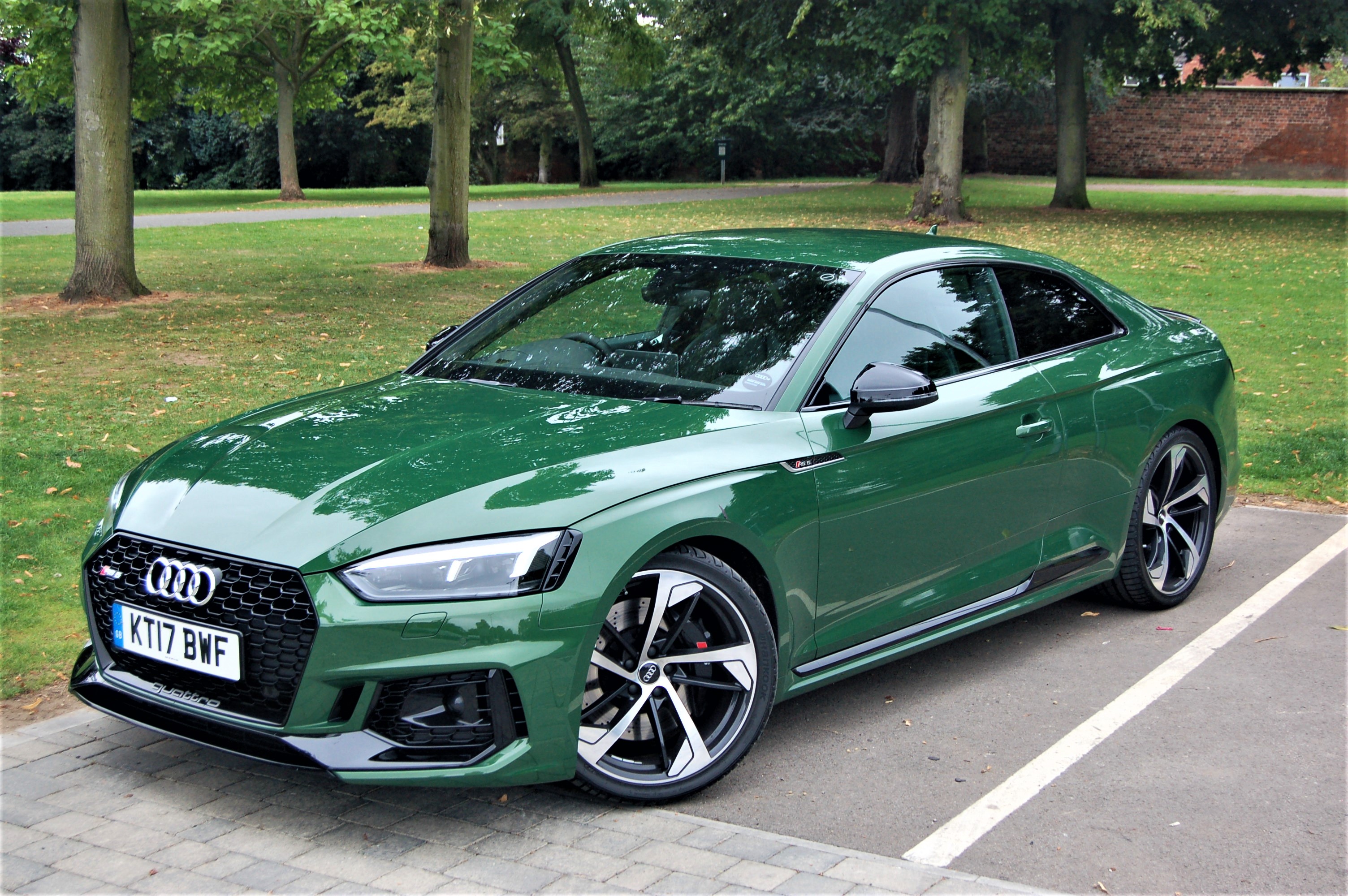
Of course, these teensy elements are only in support of a thoroughly British shade of jade that is one of Audi’s new colour combos for the RS5. The Nappa hide of the sleek coupe’s gorgeous diamond-stitched upholstery, is also picked out in green. Yet, it is what lies beneath the bonnet, displacing 2.9-litres in V6 format, producing 446bhp at between 5,700-6,700rpm, matched by an equally impressive 442lbs ft of torque developed between a lowly 1,900 to a punchy 5,000rpm, which has greatest appeal. Its massive trough of potency gifts the light RS5 a level of performance that verges on ludicrous.
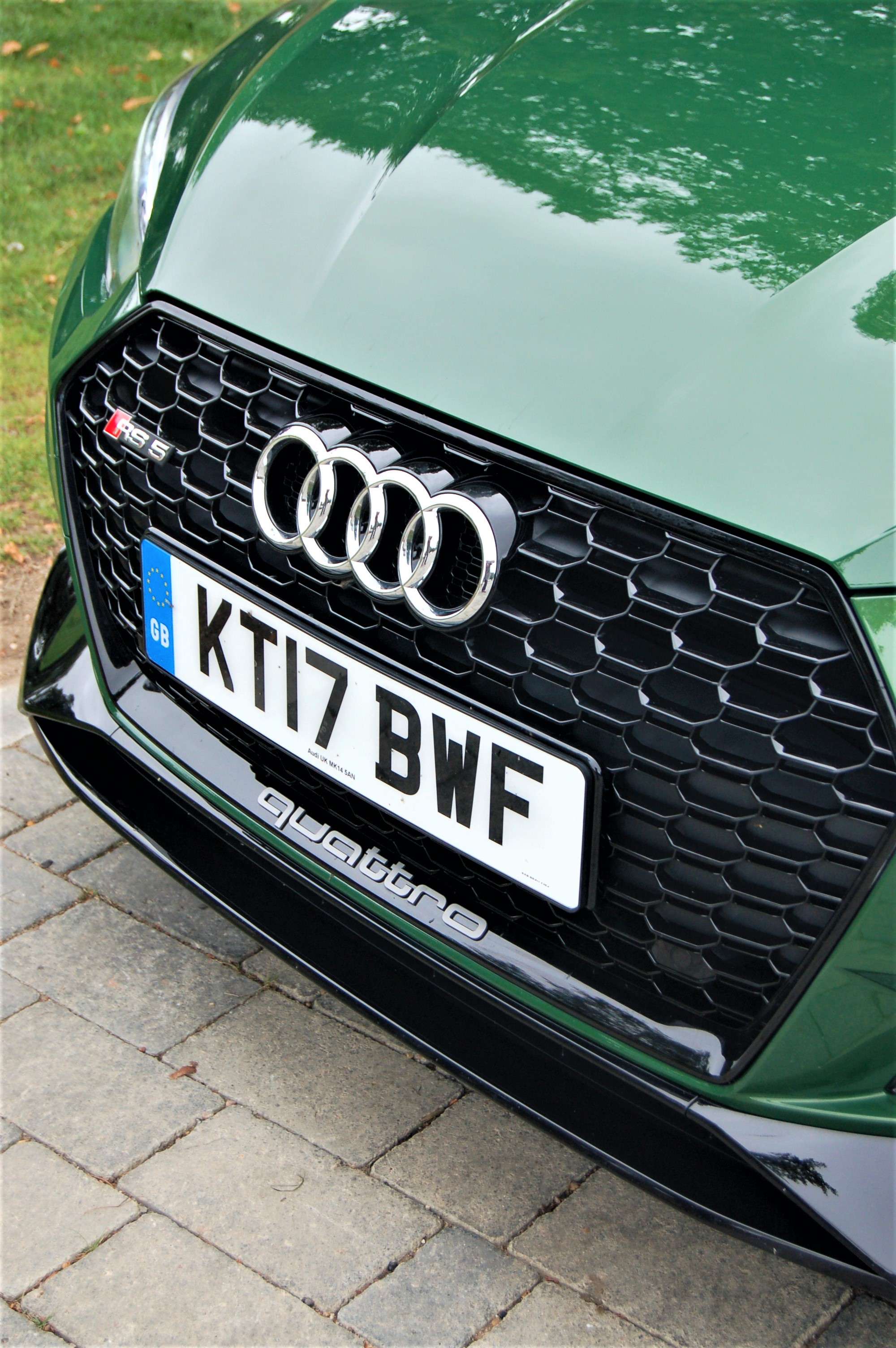
Any car breaching 3.6s for its 0-60mph sprint is rapid to say the least and the test car benefits from a 19mph speed-limiter increase to a maximum of 174mph (at an extra cost of £1,450). However, it is what you would expect of an RS model, plus a little bit. Yet, with a remarkable sense of irony, its CO2 emissions are pegged at just 197g/km, which does not help to reduce its annual road tax bill of £1,200 for each of the first five years of life after registration. Its Official Combined fuel return is given as a modest 32.5mpg, a figure that I know is achievable, as I managed a consistent 34.5mpg (on the on-board computer) in normal road and weather conditions, where activating the performance potential was typically limited.
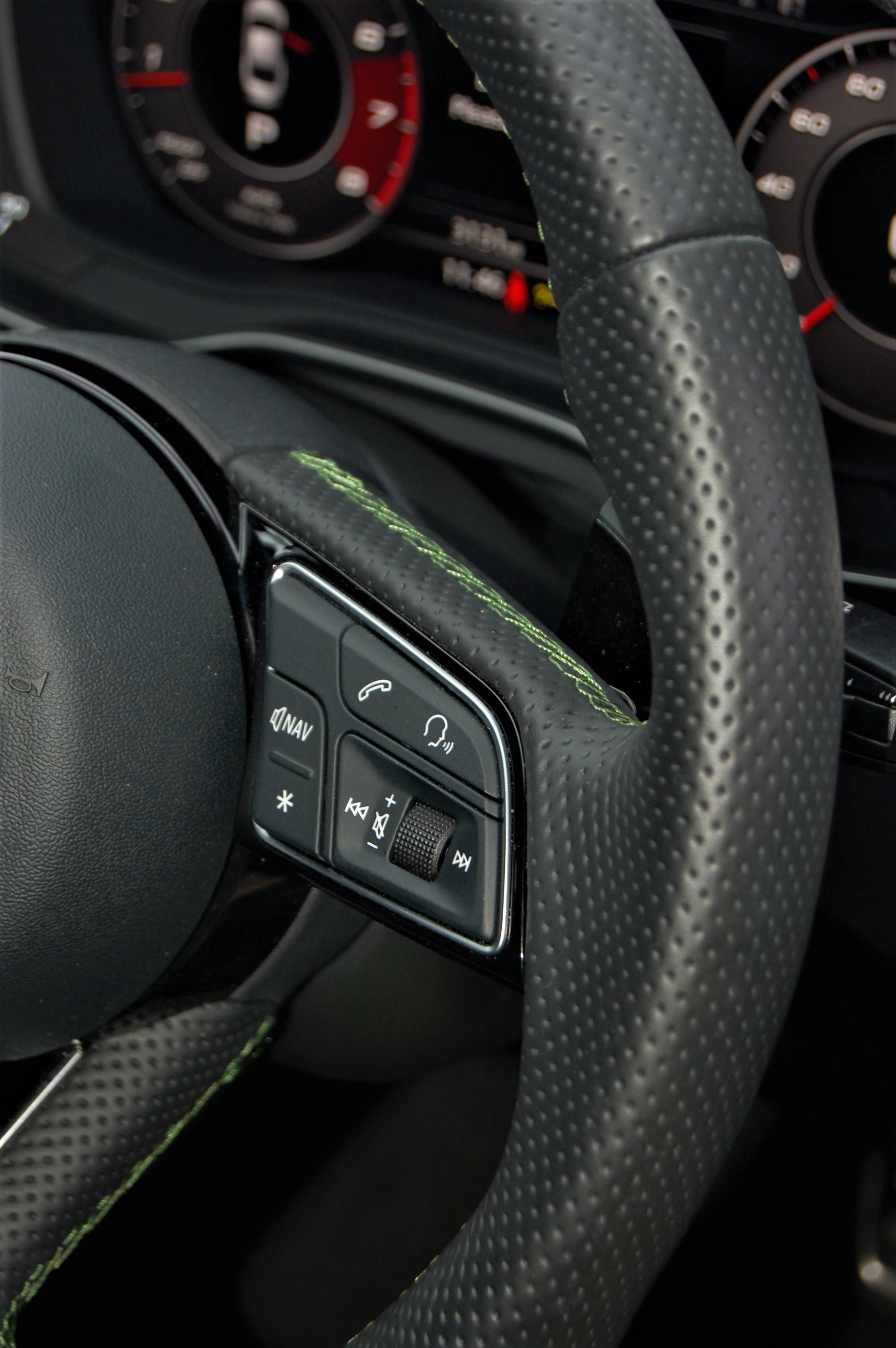
Although optimised in this installation, the ZF 8-speed automatic gearbox transmits all that power to the road, via its Quattro permanent 4WD system, which can be as ‘comfy’, or ‘dynamic’, as you want it to be, dependent on chassis setting. The driver has manual ratio control via the lever, or the paddles, which is useful when closing speeds on slower traffic can be quite high. The RS Sport exhaust system (+£1,200) is marginally more musical externally than it is from within the cabin, yet, there is something inexplicable about this ‘new style’ of Audi high performance.

While enhancements in refinement levels have clearly had an impact, the sense of urgency that used to populate RS models in the past has dissipated. That urgency used to perpetuate elements of ‘tunnel vision’, something from which Formula One drivers and fighter jet pilots used to complain. Such are refinement levels that it happens no longer in RS models, which makes the driver feel as though the car is not as rapid as its maker suggests, which could have a mixed bag of benefits for Audi. All I can tell you is that the safety aspect of closing speeds is now arguably at a critical peak.
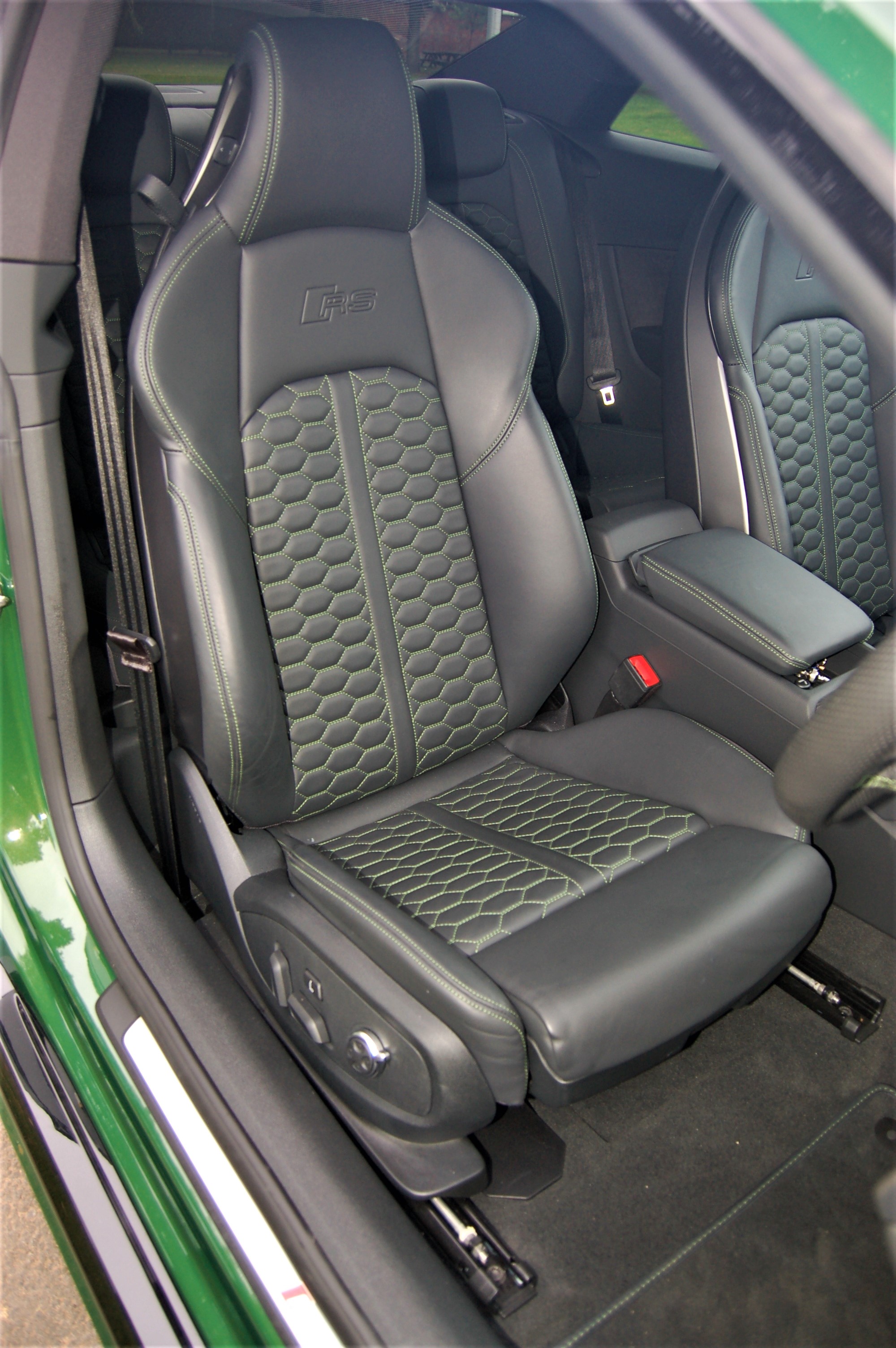
Although the test example was not equipped with the optional ceramic pads and brake discs, the stopping power of the RS5 is almost eyeball-popping. As mentioned earlier, the adjustable chassis dynamics (which cost an extra £2,000) turn the RS5 from boulevardier to part-time racer, the (+£2,000) forged alloy wheels reducing unsprung weight successfully, thereby aiding the car’s turn-in and crisp dynamic wieldiness to a level that makes it feel more hot-hatch than luxury sporting coupe. On its softest setting, which is still sportingly focussed, the RS5 rides sublimely and quietly and could be far preferable to the magnetic dampers picking up every road surface nuance and transmitting it to the base of the driver’s spine, when the alternative, firmer settings are dialled in.
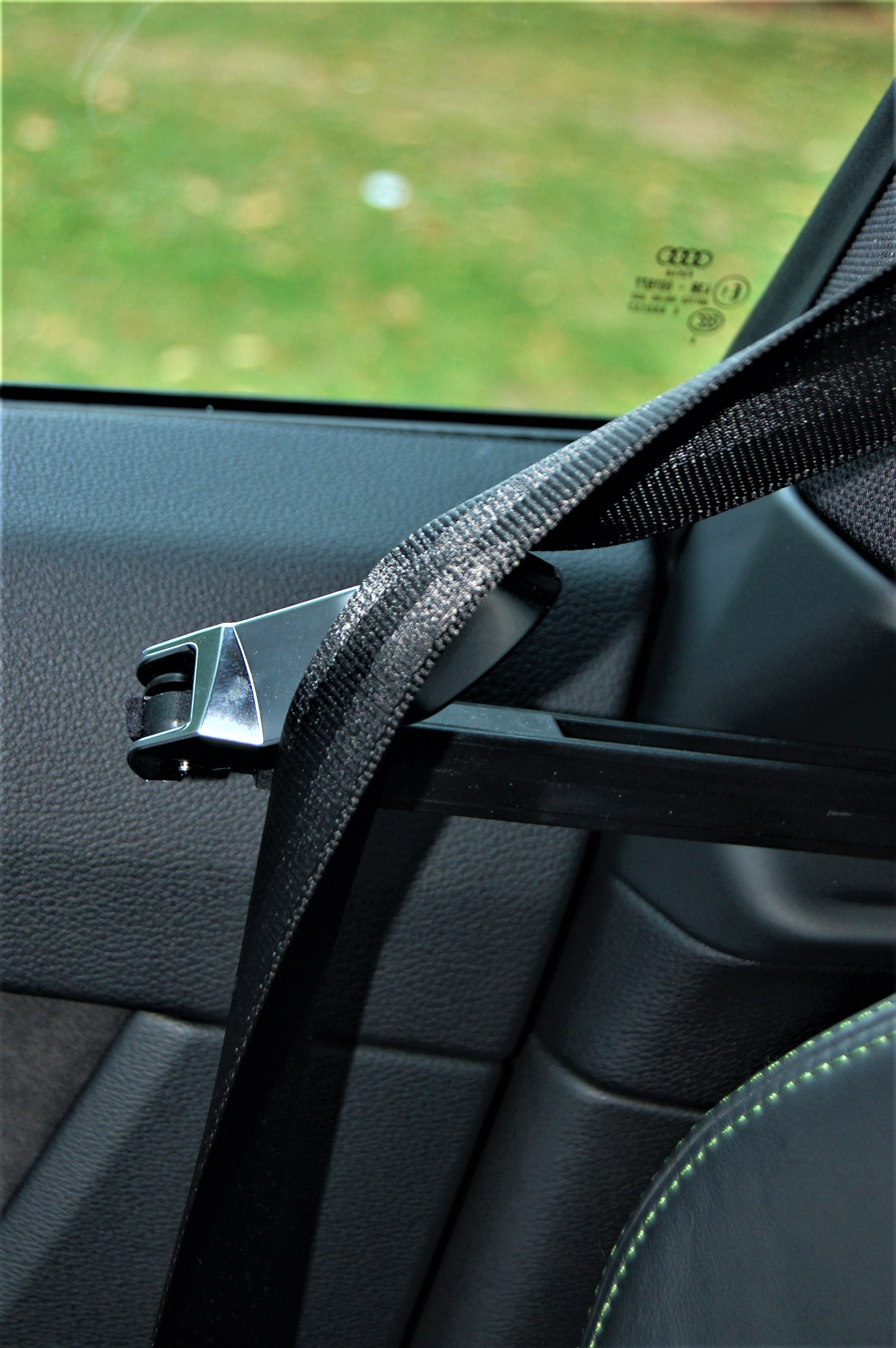
Having stated it since the outset, I can confirm that Audi interiors are simply the best. The fit and detail finish is exemplary and of an order more familiar to (VW Group-owned) Bentley owners…which is largely the inspirational source for Audi. The comfort up-front in the (+£3,500) Super Sport recliners is marvellous. The electric fine adjustment costs an extra £200. I also love the polite way the safety belt is passed to the driver by a small, electric, alloy ‘butler’ located in the B-pillar. Anything else that is not hide-wrapped, or splendidly compliant soft-touch material, is clad in both anthracite, or aluminium alloy (+£350) trim. It is beautiful, of that there is no doubt.
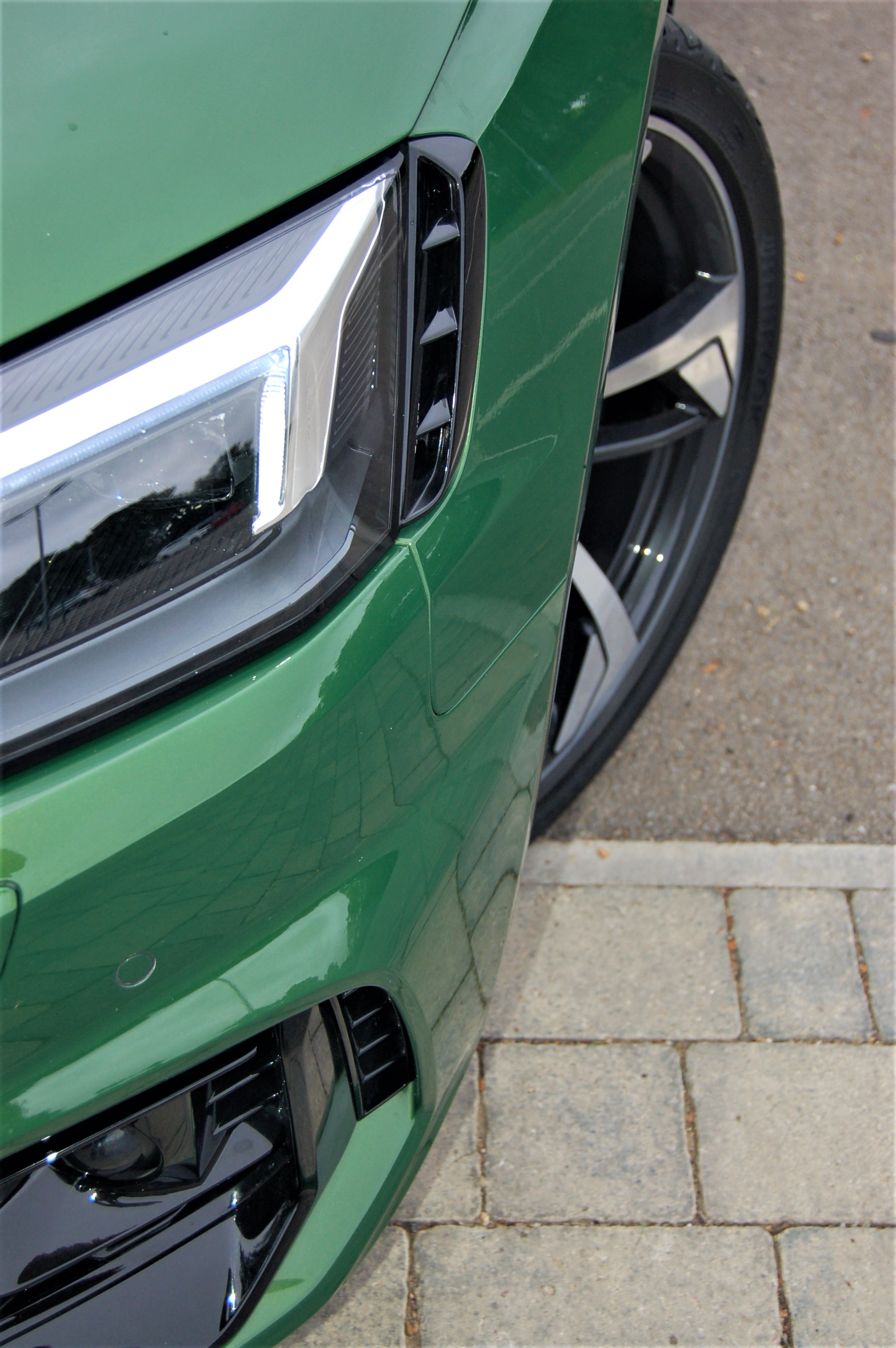
Therefore, to the pricing…the base model is £61,015, to which you need to add £645 for ordering it in Sonoma Green, which is a colour that grew on me immensely over the test period, is a lovely shade that turns heads more readily than Racing Blue ever did. By the time you have factored in the raft of extras, the on-the-road invoice bottom-line reads a cool £80,740, before any Motor Source Group discounts take effect. Naturally, it all depends on how wealthy you are, whether somebody else is picking up the tab (which accounts for well over 85% of Audi’s business anyway), or you can afford the monthly payments, to highlight that it is good value.